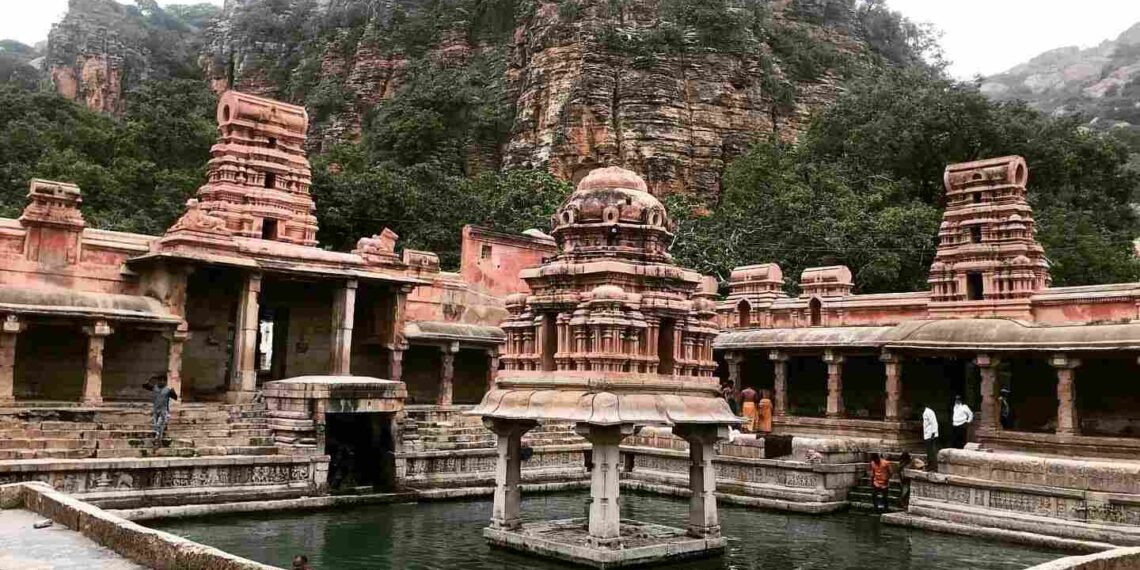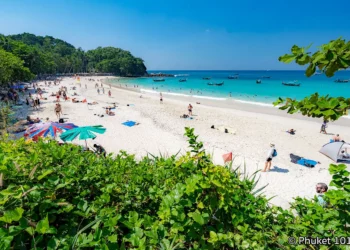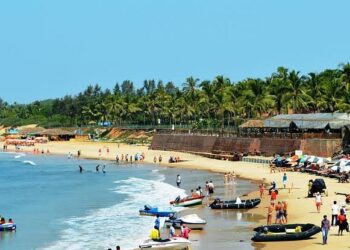The Yaganti Uma Maheshwara Swamy Temple in Kurnool is a holy temple kshetra dedicated to the divine couple, Lord Shiva and Goddess Parvati, carved as one in the Ardhanareeswara form. Nestled in the Yerramala Hills, 300 meters high with views of rocky forests, this 5th-century shrine covers about 2 acres and provides serene gopuram, ancient caves, and sacred Pushkarini pond. Known for its Maha Shivaratri festival and growing Nandi statue, the temple carries Yaganti’s deep religious and spiritual soul, filled with Sanskrit chants, and the prayers of many devotees.
Legend of the Temple
The Yaganti Uma Maheshwara Swamy Temple is tied to many legends. One local legend says that, once Sage Agastya, traveling south, wished to build a temple for Lord Venkateswara there. But the murti’s toenail broke, making it unfit for worship. Upset, Agastya prayed to Shiva, who appeared and said the hills suited him better, as it resembled Kailash. Agastya happily asked Shiva to stay with Parvati as one murti (idol) form, and Shiva agreed, forming the Ardhanareeswara statue. Another story tells of Chitteppa, a Shiva devotee, who saw Shiva as a tiger and shouted, “Neganti Shivanu ne kanti” (I saw Shiva). His joy named the place Yaganti. Locals say there is a legend due to which crows still avoid the temple. When Sage Agastya was performing his penance here, Kakasura, king of crows disturbed him from his meditation so, he cursed the crows not to enter the premises. Thus, Shani also can’t enter this place as crow is the vehicle of Shani.
History of the Yaganti Uma Maheshwara Swamy Temple
The temple’s roots reach back to the 5th or 6th century with the Pallavas, though worship may have started earlier. A stone writing from 550 CE nearby hints at a holy site, but the shrine we see began with Pallava kings. Old records say priests kept its rituals alive. By the 15th century, Vijayanagara king Harihara Bukka Raya rebuilt the sanctum, as temple stones show. The Cholas and Chalukyas, from the 7th to 12th centuries, added halls, old books tell.
In the 1600s, the temple was a quiet spot, with tribal folk and devotees keeping it strong, Kurnool’s logs say. The Vijayanagara rulers, from the 14th to 16th centuries, built paths through the hills, tying the temple to their lands. In 1515, Krishnadevaraya gave gold for festivals, making it a faith hub. The Qutb Shahis held Yaganti briefly in the 17th century, then the British came by 1858, but the prayers held firm. After 1947, Andhra’s government took over, and the Endowments Board runs it now. Saint Veerabrahmendra Swamy, who wrote Kalagnanam here, spread its name in the 17th century, helping Andhra’s Bhakti ways grow. As a key Shaiva shrine, it draws thousands seeking Shiva’s grace, making it a big part of Yaganti’s culture.
Architecture of the Temple
The Yaganti Uma Maheshwara Swamy Temple blends Pallava and Vijayanagara styles, covering 2 acres. Its three-story gopuram, 15 meters tall, is carved with Shiva’s dances, yali beasts, and floral patterns, painted white and gold. A stone door, etched with gods, leads to the sanctum, where the 5th-century Ardhanareeswara idol, 4 feet tall, glows with lamps. A small shrine for Veerabhadra Swamy, built in 1400, is near. The main holy room, fixed in 1500, has stone pillars with Shiva Purana scenes and Pallava signs.
The navaranga hall, with 10 pillars, shows Mahabharata tales and Vijayanagara marks. A 15-foot Nandi statue, carved in 1200, faces Shiva, believed to grow 1 inch every 20 years, as ASI confirms. The courtyard has a holy Pushkarini pond, where water flows year-round from a hill through Nandi’s mouth, a mystery. Caves like Agastya, Venkateswara, and Veera Brahmam, from the 6th century, are nearby, holding old idols. Wall carvings from the 1100s, kept by the ASI, show Shiva’s glory, making every corner a piece of the past. The temple’s hilltop spot, looking over Yaganti’s forests, joins it to the town’s old days near the Vedavati River.
Festivals and Rituals
The temple comes alive during festivals, especially Maha Shivaratri in February or March, a grand day from ancient times. On this day, Shiva’s murti is bathed in milk, with priests chanting mantras and offering flowers. Thousands gather with music, and drums filling the air throughout the night. Navaratri brings quieter prayers for Parvati, with lamps lighting the caves.
Telugu bhajans and Bharatanatyam dances, sharing Shiva’s tales, echo through the halls. Maha Shivaratri’s special puja, with camphor scents, mixes faith and joy, as locals tell of Shiva’s blessings. The temple keeps Yaganti an integral part of Andhra’s temple complexes, with free meals served in a dining hall during festivals.
Getting to the Temple
Yaganti is reachable via Hyderabad Airport, 290 km away, which has flights from Delhi (2 hours) or Bangalore (1 hour). Taxis take 5 hours to the temple. Nandyal Railway Station, 55 km away, links to Hyderabad (5 hours), Chennai (10 hours), and Bangalore (8 hours). Buses or autos from Nandyal take 1.5 hours. Buses from Kurnool (80 km, 2 hours) or Hyderabad (308 km, 6 hours) stop at Banaganapalli, 11 km away. Autos cost 50-100 rupees to the temple. No entry fee, but pujas may cost 100-500 rupees.
Practical Tips for Visiting
Andhra Pradesh gets hot, up to 10°C, with rains from June to September. October to March is cooler, around 21°C. Better to visit the temple early in the morning to skip crowds and heat. Wear clothes covering shoulders and knees; dhotis or saris are best choice. Take off shoes and wash feet at the Pushkarini if told. Maha Shivaratri gets full, so book pujas early. Bring water and sturdy shoes for the 200+ steps. Autos in Banaganapalli cost 50-100 rupees; bargain and ask them to wait.
Final Thoughts
The Yaganti Uma Maheshwara Swamy Temple is the holy place where devotees can worship Shiva Parvati as a single Ardhanarishwara form reflecting deep cultural and religious abundance. Set in its hills with forest views, the temple calls devotees from far away, where their holy presence lives in every stone and chant, making it a must-visit among Andhra’s temples.











